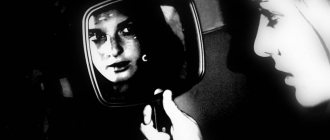Fear is a basic emotion. It was thanks to him that humanity managed to survive as a biological species, because fear kept our distant ancestors from actions that could harm them. Since ancient times, some animals and insects have posed a danger to humans. Therefore, many psychiatrists are of the opinion that zoophobia (fear of a certain group of animals) is of genetic origin. Among zoophobias, insectophobia occupies a special place.
It is one of the specific phobias, i.e. limited to strictly defined objects or situations. This phobia is associated with the fear of insects and affects people of all ages. More often than other types of insects, bees and ants become objects of fear during insectophobia.
How does insectophobia manifest?
What is insectophobia? This is a fear of insects. What is another name for fear of insects? Entomophobia.
Symptoms and signs of insectophobia include the following (disease manifestations):
- panic attacks;
- nausea;
- muscle tension;
- tachycardia;
- dilated pupils;
- pale or red skin;
- sweating;
- headache;
- dizziness;
- hyperarousal.
Psychological symptoms include a pathological desire to escape from contact with an insect or to destroy an insect. The more advanced the course of the disease, the more this idea turns into manic. The patient puts on protective equipment, treats himself and the house from insects, and looks for places where insects accumulate. Obsessed with the idea of destroying “enemies,” the patient can harm himself and other people (poison, burn).
Another psychological symptom is fear. An insectophobe is afraid of getting infected or being bitten. Fear of parasites should be placed in a separate category. Let's take a closer look at why people are afraid of insects.
Fear of infection
Flies, cockroaches and other insects are indeed carriers of infections. But if some people have anxiety and concern for their health at a normal level (observing basic rules of hygiene, cleaning their homes if necessary), then for insectophobes this turns into paranoia. Against this background, obsessive-compulsive disorder and hypochondria often develop. Fear of infection forces the patient to frequently wash his hands, treat himself and his home with chemicals, and take other health measures.
Fear of being bitten
A bite is scary for several reasons: pain, infection, allergies, poisoning. Paradoxically, most often people are afraid of bites from harmless insects, such as cockroaches. In this case, fear is caused by ignorance of the peculiarities of the life of individuals, for example, ignorance that a bite is a means of defense, not an attack.
Fear of parasites
No one would want parasites in or on their body. But while some people rationally process food and keep their clothes and bodies clean, others are pathologically obsessed with looking for parasites and their eggs, and processing everything that surrounds a person.
This is interesting! One of the phobias is the fear that an insect will lay eggs directly in a person’s body or wound. Some individuals actually reproduce this way, but such representatives are not found in Russia. The same cannot be said about exotic countries.
Somatic manifestations:
- dilated pupils,
- muscle hypertonicity, trembling of arms and legs,
- increased heart rate,
- paleness/redness of the skin,
- psychomotor agitation,
- changes in blood pressure,
- profuse sweating,
- nausea,
- difficulty breathing, shortness of breath,
- weakness, faintness;
- panic attacks.
An insectophobe has a desire to run away from the insect or deal with it. He loses the ability to think rationally and in this state can harm himself and others.
Causes of fear of insects
There is a genetic theory according to which insectophobia was inherited by people from distant ancestors. In the modern world and conditions of all kinds of progress, this explanation seems strange, so psychologists have put forward several more theories.
Freud's psychodynamic theory
Insectophobia is the result of the transference of fear and anxiety, repressed into the subconscious. A person was frightened by something for a long time and for just as long he suppressed his feelings or it was an abstract negative, because of this the defense mechanism of the psyche turned on. As part of this mechanism, anxiety was transferred to an accessible object. According to Freud's theory, only a specialist can rid a person of a phobia, since you need to work with the subconscious.
Behaviorist behavioral theory
This theory states that fear of insects is formed directly upon contact with an object. Associations can be direct or indirect; let’s consider both ways in more detail.
Conditional path
We are talking about personal experience of unsuccessful communication with an insect. More often this happens in childhood (children are characterized by increased impressionability and mental instability). For example, a child was bitten by a wasp, or he unexpectedly encountered some kind of bug and got scared. In adulthood, the phobia may develop after being attacked by bees or other insects.
Simulated path
This is an indirect way of forming fear. This is not about personal experience, but about the stories of other people, media reports, etc. A person adopts someone else’s negative attitude towards insects. The source can be not only media reports and horror films, but also parents. Prohibitions, threats, intimidation, and personal fears of parents pass into the child’s subconscious.
Treatment
Treatment of insectophobia takes place in two stages:
- Search for the cause: a traumatic situation in the subconscious, memory.
- Working on the situation, rethinking.
First, the psychotherapist finds the reason that provoked the phobia. The patient sees the situation differently. Once the cause is eliminated, the symptoms also go away. Over time, the person completely gets rid of the phobia.
Supportive therapy is also provided. This is the attachment of positive associations to insects of the species that frighten the patient. Psychologists show fear from the other side and explain the degree of real danger. The patient understands how exaggerated his fears were. There is no more panic. If necessary, the doctor will prescribe medication to eliminate anxiety and destructive manifestations of fear for the body.
Description of the phobia and its subtypes
There is no specific testing to identify pathologies. Psychologists are guided by generally accepted criteria from clinical psychology.
Insectophobia is diagnosed if the following signs are present:
- strong fear and irritation at the sight of a specific individual;
- fear and anxiety when thinking about meeting an insect, when seeing photos or video materials;
- avoidance of encounters with the object of fear;
- tension and fear caused by a specific insect, persisting for six months or more.
There are hundreds of types of fear of insects, let's look at the most popular ones.
Acaraphobia
Acaraphobe is terribly afraid of ticks and avoids walking in the forest or relaxing in the park. When forced to go outside, he carefully examines himself and uses protective chemicals. When seeing a tick, especially on oneself, the patient panics. The cause of the phobia can be either personal experience of being bitten, or news from the media, or stories from friends.
Apiophobia
This is a fear of bees. More common in children. The cause of fear can be either the memory of a painful sting, or intimidation from adults or their reaction to the bee (screams, panic).
Arachnophobia
This is a fear of spiders. The species itself is not an insect, but in human perception, spiders are often associated with insects. You can meet a spider anywhere, but you need to remember that those individuals that live in our area are not dangerous to humans.
Dipterophobia
This is a fear of flies. Most often, fear is caused by associations with infection and pollution. With this type of phobia, a person develops increased cleanliness. The craving for cleanliness becomes pathological.
Isopterophobia
This is a fear of termites and other creatures that feed on tree bark. Psychologists associate the development of phobias with childhood psychotrauma. This is an atypical and rare phobia. Its treatment requires a strictly individual and specialized approach.
Cnidophobia
This is the fear of stinging individuals: wasps, bees, mosquitoes, horseflies and others. The specificity of a phobia is that it is almost impossible to isolate yourself from the source of fear.
Myrmecophobia
This is a fear of ants. The reason is a personal injury, for example, a child accidentally stepped or fell into an anthill and was bitten by ants. Pain and a feeling of helplessness are what frighten a myrmecophobe.
Scoleciphobia
This is a fear of worms and maggots. Most people feel disgust and disgust. Fear can be a consequence of personal psychological trauma or associations with rotting, decomposition, or death. Perhaps scoleciphobia hides a fear of death.
Lepidopterophobia
This is a fear of butterflies. The reason for the development of a phobia is personal psychological trauma. If you cannot remember the traumatic events on your own, it is recommended to consult a psychologist.
It is important! All types of entomophobia have the same manifestations and the same treatment. Only the object of fear changes.
Some facts
There are peoples who today live in nature, far from civilization. They are constantly in contact with insects of different species and are not afraid of them. There are several reasons for this:
- Insects do not feed on people; they have no reason to attack. (Exception: mosquitoes and ticks).
- After a tick bite, all you need to do is go to a medical center, where they will help you.
- Mosquito bites do not spread AIDS. Not a single case has been recorded, despite the fact that the disease is very common.
- The bee dies after stinging you. She will only attack as a last resort. So don't be afraid of bees. Be calm. Move away. It would be enough.
- Everyone is afraid of spiders. But few people know that even tarantulas do not have deadly poison. In many species, only females are poisonous during the breeding season. This dramatically reduces the chances of death. Not all venomous spiders are poisonous enough to kill a person. It is enough to study the information and know what measures to take in case of a bite.
Now think about it, is your fear justified?
How to get rid of a phobia
At the early stage of development of a phobia, psychologists use hypnosis. One session is enough for healing. In other cases, psychotherapy is used.
Psychotherapy
Three methods are used in psychotherapy. How to overcome a phobia:
- Flood. The client is brought face to face with the object of fear. At the same time, the specialist demonstrates the irrationality of fear and the absence of harm.
- Modeling. The psychologist and the client reproduce a frightening situation. First, the psychologist actively interacts with the insect, and the client observes this and then mentally joins. The second modeling option is a mental representation of a terrible situation by the client himself. He recreates the situation in his imagination until the fear subsides.
- Desensitization. The psychologist and the client make a list of frightening situations. After this, the psychologist teaches the client relaxation skills. Then, under the supervision of a psychologist, the client is immersed in turn in each situation from the list (from the weakest to the most frightening).
In the presence of panic attacks, secondary disorders, and depression, medications are prescribed. This is symptomatic therapy that does not affect the cause of the phobia. For a lasting effect and complete healing, psychotherapy is needed.
Overcoming fear on your own
How to get rid of a phobia yourself and overcome fear (recommendations for adults):
- Try to remember the first time you experienced fear. What do you think is the reason?
- Write down which insect scares you and why it scares you.
- Find as much information as possible about the life of this insect. For each fear, write down at least one reassuring fact from a reliable source.
- Don't avoid encountering insects. On the contrary, get outside and into parks as often as possible. To begin with, you can visit an exhibition or greenhouse where a frightening species of insects is presented. There you can find out more information about the individuals.
- In moments of panic, use breathing exercises to calm down and regain control of the situation.
- Gradually move closer to the scary object. Reduce the distance until you can pick up the insect in your hands.
How to help your child get rid of insectophobia and overcome fear:
- Give as much information as possible about the individual. If the child is small, then show him an encyclopedia with colorful pictures or a documentary film. Find out what exactly scares the child and pick up some calming arguments.
- When working with young children, use fairy tale therapy. Tell your child a story where a scary insect is presented in a positive way.
- When working with older children, use the gradual approach method. Take your child on an excursion and first show a film about the life of an insect.
It is important! If you cannot cope with fear on your own, then you need to urgently consult a psychologist. The disease cannot be ignored.
If the attack took you by surprise
Insectophobia often catches a person at the wrong time. You can see an insect on yourself or in close proximity everywhere: at work, at home, while walking, in nature. The first thing to do is to go to a safe distance. This is a simple precaution to avoid being bitten by a bee, tick or spider. If an insect is in the house, it must be expelled or destroyed. The bee can be driven out by opening the window. It's more difficult with a spider.
5 recommendations will help you cope with panic:
- If panic sets in, breathe deeply. Inhale for “one”, exhale for “two”.
- Call someone who can remove the insect from your home.
- Remember that there is no real danger.
- Remember that the cause of fear is your distorted attitude towards this species. The insect is not dangerous. They generally do not have the habit of attacking unnecessarily.
- Don't make a big deal about the episode. Immediately switch to other thoughts. We live in unity with nature, and spiders, bees and others are as much a part of it as humans.
Learn to control yourself, don't react too emotionally. Imagine the calmest, most balanced person from your environment. How would he react? Take his behavior pattern and copy it.
First aid for panic attacks
In a moment of panic, a person thinks that he will suffocate, die, or go crazy. Somatic symptoms include ringing in the ears, dizziness, and nausea. It is better to entrust the treatment of panic attacks to a specialist; in this case, drug treatment is indicated. But it's important to know what you can do if a panic attack takes you by surprise.
First aid for a panic attack:
- focus on any object, this is necessary to switch attention;
- take several deep, long breaths in and out, this is necessary to normalize breathing and heartbeat.
You can use a paper bag. Take one deep breath and after eight seconds exhale slowly into the bag, repeat the procedure for five minutes.
Exercise and communication with loved ones are indicated as additional methods and means of prevention. Try to spend less time alone, especially before an upcoming meeting with the subject of fear.
Complications
A phobia that bothers someone and causes serious problems in their life may not seem like a concern to others. A patient suffering from insectophobia may have many complications, such as:
- Avoiding any social interaction because of the thought that people might laugh at him. This behavior can lead to reclusiveness and loneliness.
- The complication of insectophobia leads to clinical depression or develops anxiety disorders.
- Substance abuse to cope with stress caused by fear.
Methods for correcting the condition
Additional therapy may include antidepressants, antipsychotics, and sedatives. They eliminate somatic symptoms, as well as possible complications during panic attacks.
In extremely severe cases, hypnotherapy may be required. Sometimes specialists from other medical fields come to the aid of a psychotherapist when the trigger for fear is physiological trauma. In this case, it becomes clear which specialist deals with this disease. It is possible to develop allergic reactions from bites of ants, bees and other insects. This can be complemented by psychological problems, so an integrated approach is required to heal from the pathology.
About the benefits of stress
Stress is a beneficial physiological response that dictates our behavior in potentially dangerous situations that require close attention. This is a natural process that is a response to suspicious external factors (barking dogs) or excitement (riding on dizzying rides). When these and other situations occur, the nervous system sends signals to release adrenaline. This hormone prepares your body for a response known in psychology as “fight or flight.”










